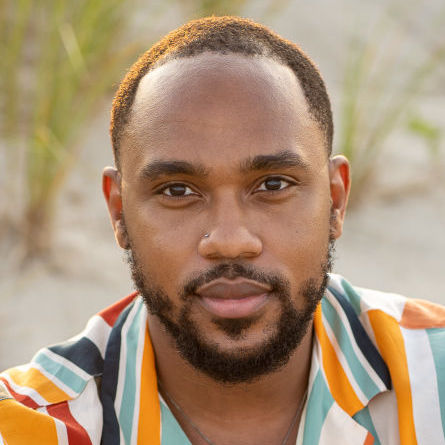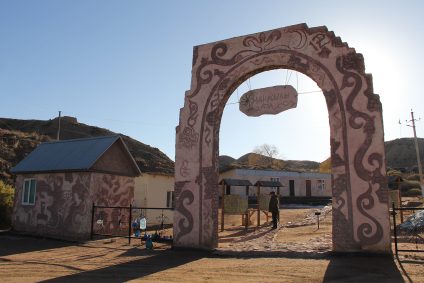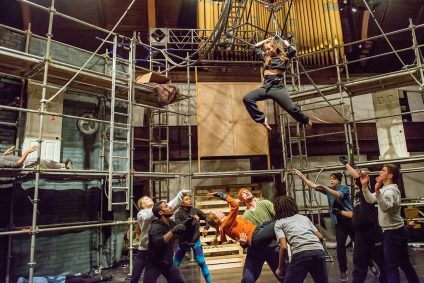“She’s a God. She’s a hero. She’s survived all she’s been through.”
– Cozy, “Renaissance (Act I)”
Something feels different about Beyoncé, and it’s time for us to start taking her more seriously.
I’ve found myself obsessed with her 2022 album “Renaissance,” called “Act I,” as it is a part of a three-act project. It’s been two years since it dropped, but I’m still blaring the house-inspired anthems like they came out yesterday. I’ve always been a fan but had never quite felt the need to stan until now. There’s just something different about this album. Something different about Beyoncé.
At the end of an action-packed Verizon commercial aired during the 2024 Super Bowl broadcast, Beyoncé teased, “OK, they ready … drop the new music.” Shortly after, she confirmed that “Act II, Cowboy Carter,” would be released on March 29.
I’m a Black queer man, so of course, I resonate with the album and tour’s clear nods to LGBTQ liberation. At the same time, anyone lucky enough to see her live can attest to how free and poignant Beyoncé seemed on stage. The holding energy in the air made the stadium feel like a safe container. At the final performance of her Renaissance World Tour 2023 in Kansas City, Missouri, Beyoncé offered a brief but heartfelt commentary before wrapping up her opening.
“This has been a beautiful journey … at this age, I’m able to be present. And I can be in the moment while I’m living it. It’s something that’s taken me time. But right now, I’m here. And I can feel every single one of y’all. With everything, I pray that I’m able to give y’all all of my energy. And we give it back to each other. And that’s what the Renaissance is about.”
We often typecast Beyoncé as the power-imbuing femme fatale, but here we glimpse a more alchemized Beyoncé — a healed Beyoncé. We got top notes of this through her 2016 album “Lemonade,” which was lauded for its deeper themes, and now we are on the other side. Beyoncé has gone through her journey, become the heroine of her story, and is ready to share what she’s learned.
The idea of a hero departing, overcoming obstacles, and returning home with treasure is a sacred and enduring myth that describes so many of our own personal stories. In fact, after noticing its saliency across several cultures, mythologist Joseph Campbell called it the monomyth. He used the monomyth to create a framework called The Hero’s Journey. In his book, “The Hero With a Thousand Faces,” he writes:
“A hero ventures from the world of the common day into a region of supernatural wonder. Fabulous forces are encountered, and a decisive victory is won. The hero returns from this mysterious adventure with the power to bestow boons on his fellow man.”
Since its inception, this myth has inspired creatives. It was made mainly famous by George Lucas, who used the monomyth to create Star Wars. At its core, the hero’s journey involves three stages.
Departure, Initiation, Return.
The hero answers an undeniable call, goes through a series of tests, and then returns home to offer his community gifts based on his new knowledge. The hero has undergone his own rebirth. His own renaissance. When we see or live this pattern, it resonates with us deeply and profoundly. Carl Jung, a psychoanalyst and protege of Freud, argued that humanity shares a collective unconscious, a shared cultural collection of symbols and signs, which he called archetypes, that permeate us all.
Beyoncé seems poised to activate the hero in all of us.
For example, announcing her soon-to-be-released album “Cowboy Carter” on Instagram, Beyoncé writes, “… It was born out of an experience that I had years ago where I did not feel welcomed…and it was very clear that I wasn’t.” While she doesn’t directly name the experience, many on social media speculate that she’s referring to the conservative backlash to her 2016 performance of her country hit “Daddy Lessons.” The racist backlash was emblematic of a broader reluctance (and, in some cases, outright hostility) to accept Beyoncé as a country artist in any capacity.
In general, many believe the “Renaissance” project is about taking back traditional Black music genres that have been co-opted. House. Country. And presumably, Rock.
She writes, “…the criticism I faced when I entered this genre forced me to propel past the limitations placed on me.”
Usurping personal limitations is integral to the “Return” phase of the Hero’s Journey. By releasing the ego, the hero achieves a metaphorical death that offers divine knowledge, and this knowledge is the “true” gift. In “Thousand Faces,” Campbell says:
“…the meaning is clear; it is the meaning of all religious practice. Through prolonged psychological disciplines, the individual gives up completely all attachment to his personal limitations, idiosyncrasies, hopes, and fears and no longer resists the self-annihilation that is a prerequisite to rebirth in the realization of truth. His ambitions totally dissolve, and he no longer tries to live but willingly relaxes to whatever may come to pass to him…”
Resisting the need to prove anything and instead honoring complete self-acceptance, Beyoncé says,” This ain’t a country album. It’s a ‘Beyoncé’ album.” The enemy has already been vanquished, and the heroine is returning home. This fully integrated Beyoncé’s self-acceptance is the crux of the Renaissance project. The gift she’s giving us keeps the album songs on repeat. If even Beyoncé, with seemingly all the ease in the world, can rebirth herself into self-love. Why can’t we?
In her invocation of these themes, her work is tapping into a cultural zeitgeist that exists at the level of myth. This is not too great a leap to make. One of her iconic outfits from the tour was inspired by Botticelli’s Birth of Venus (more on the nose – she even performs the accompanying song “Virgo’s Groove” from inside a glittering clam).
Some might think it problematic or trite to continue deifying Beyoncé, but that’s only if you dismiss a crucial purpose of myths, which is to remind us that we’re, in fact, human.
Despite her massive success and the clear intentionality Beyoncé puts into her music, we still need to improve our appraisal of her work as something that might be both prescient and timely at the universal level.
She infamously has yet to receive the Grammy Award for Album of the Year, despite being the most Grammy-awarded artist of all time – a contradiction that Jay-Z pointed out at the 2024 Grammys earlier this year. We seem unable to imagine that a Black female artist can be both a commercial icon and a serious artist.
It may be time that we transitioned our understanding of Beyoncé’s work. While she’s still giving us the booty-shaking bops she’s famous for, it’s time to reorient and center what she’s really up to (and has been for quite a minute). When so much of the Western cultural lineage is permeated by images of white men, it’s time for us to elevate a Black woman to the artistic status she deserves and begin to embrace new templates for what we might call timeless or canonical art. Some might think it problematic or trite to continue deifying Beyoncé, but that’s only if you dismiss a crucial purpose of myths, which is to remind us that we’re, in fact, human. By reminding us of her humanity, Beyoncé is tapping into an enduring legacy that will keep her (literally and figuratively) fixed among the stars.

Aaron Talley
Aaron Talley is a writer, activist, and educator currently based in Chicago, Illinois. His writings, which explore the intersections between identity, spirituality, education, and mental health, have been published in various blog and media outlets, including The Advocate, Education Post, and The Nation. Represented by KT Literary, he is currently working on a Young Adult novel which puts a speculative spin on adolescent mental health. When not writing, reading, or teaching, or you can find him watching anime or playing the latest Japanese RPG. He is originally from Detroit, Michigan. You can follow him on Twitter: @Talley_Marked
Latest Articles
-

American Civic Life
Once Protected by its Remoteness, a Sacred Lake in Kyrgyzstan is Threatened by Change
April 26, 2024
-

-

-

-

Interfaith America Interview
"You Desperately Need Rest," Author Dalton-Smith on Sacred Rest
April 16, 2024
Join us today
Get inspired, equipped, and connected to unlock the potential of America’s religious diversity.